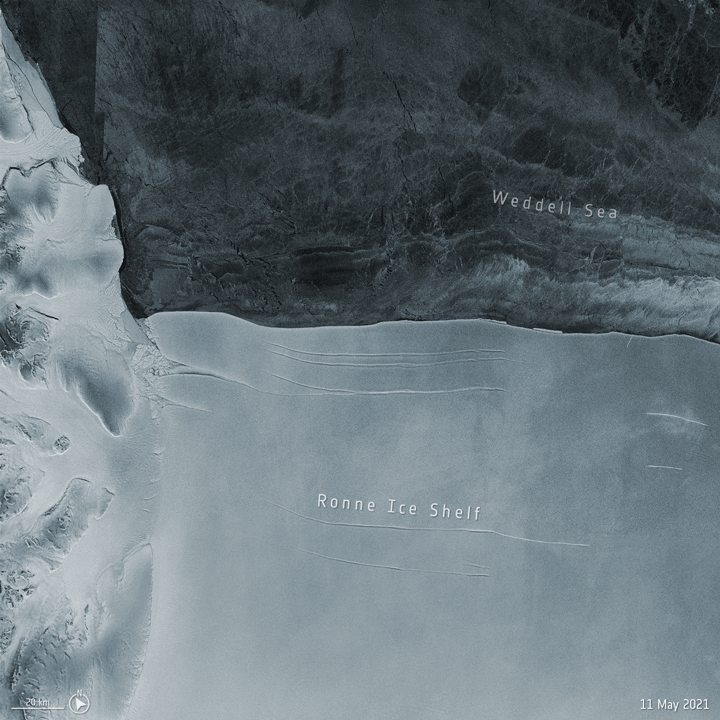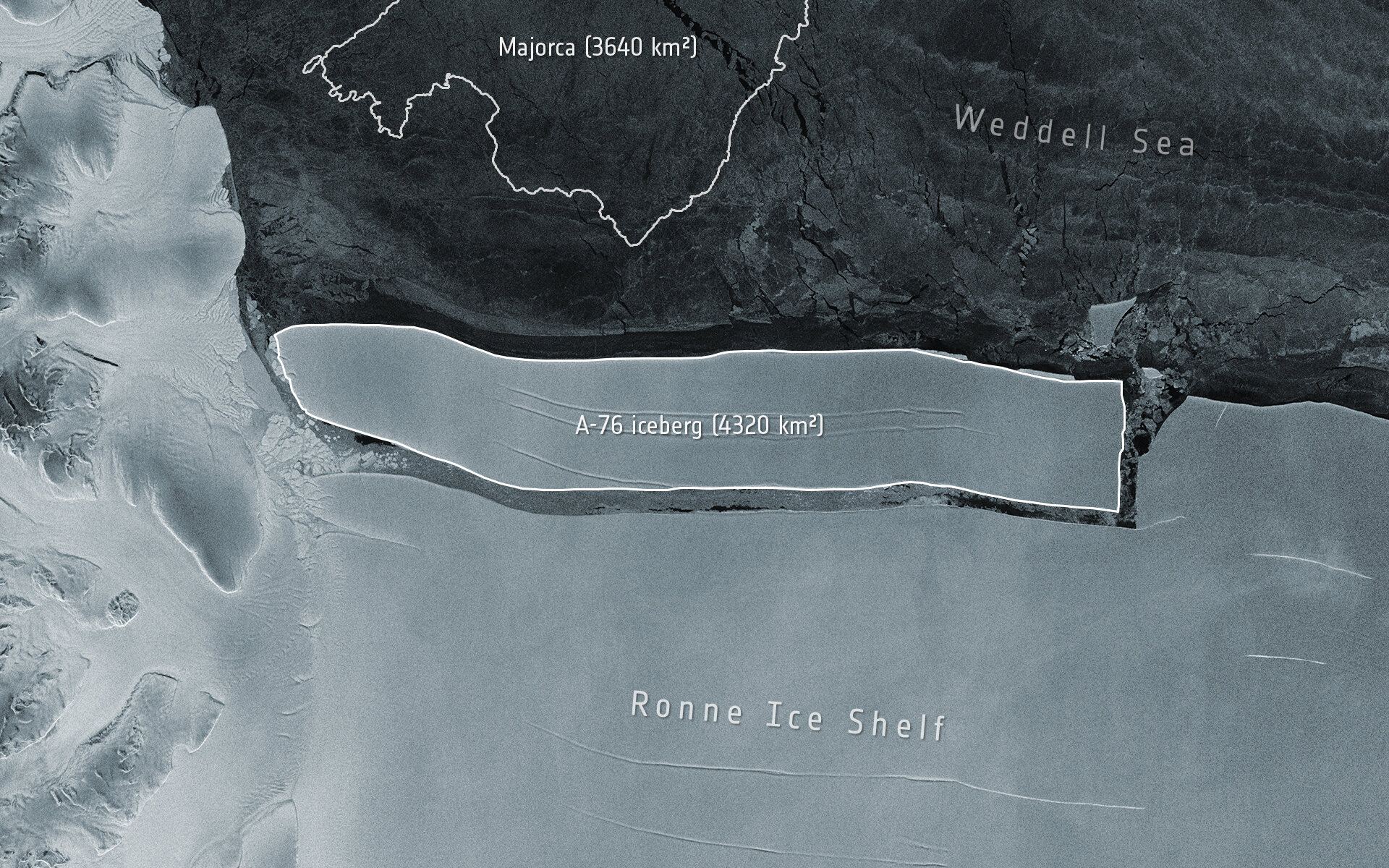A gigantic chunk of ice recently broke off from an ice shelf in Antarctica, and is currently the world’s largest iceberg. The iceberg, dubbed A-76, measures around 4,320 square km (1,670 square miles) in size. At 170 km (106 miles) in length and 25 km (15 miles) wide, the iceberg is slightly larger than the Spanish island of Majorca, and bigger than the state of Rhode Island in the US.
A-76 was captured in the above image by ESA’s Copernicus Sentinel-1 satellite. Below is an animation of the iceberg calving off the Ronne Ice Shelf.

While A-76 is huge, it’s not the biggest ever. It is only about one-third the size of the biggest iceberg in recorded history, B-15 which calved off of Antarctica’s Ross Ice Shelf 21 years ago. The B-15 iceberg covered more than 10,878 square km (4,200 square miles) when it broke away, according to NASA’s Earth Observatory
The iceberg was spotted by the British Antarctic Survey and confirmed with the Copernicus Sentinel-1 imagery. The Sentinel-1 mission consists of two polar-orbiting satellites that rely on C-band synthetic aperture radar imaging, which can take images day or night. This allows almost constant year-round viewing of remote regions like Antarctica.
Icebergs are named based on the Antarctic quadrant in which they were originally sighted, with then a sequential number when the iceberg breaks off. Antarctica is divided into quadrants, with the letters A, B, C and D used to denote the different regions. A-76 was spotted in the Bellingshausen/Weddell Sea quadrant and was the 76th iceberg tracked by the U.S. National Ice Center.
Source: ESA

